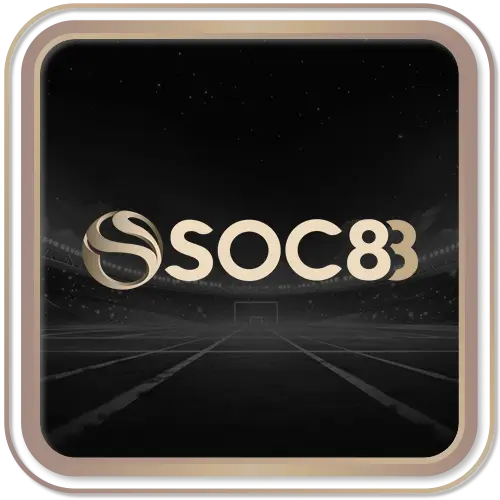BONG88 ⚡️ LOGIN NHÀ CÁI VIVA BONG88 TẶNG 99K 【MAPWIZ.IO】




Link Truy Cập Bong88

Bong88 định hình chuẩn mực cá cược hiện đại với nền tảng tinh gọn, giao diện trực quan và hệ thống kèo cược ưu việt. Người chơi đắm mình trong thế giới giải trí đỉnh cao, nơi mọi trận đấu, ván cược đều được tối ưu từ tỷ lệ đến tốc độ xử lý giao dịch. Mỗi khoảnh khắc trải nghiệm tại VIVA Bong88 không chỉ khơi gợi đam mê mà còn mở ra cơ hội bứt phá trong sân chơi đầy chiến lược và tính toán.
==> Nhà cái uy tín nhất: kubet, kubet, winbet, iwin, manclub, vz99, sunwin, sun win, hello88
Tìm hiểu về Bong88
Bong88 không chỉ đơn thuần là một trang web cá cược; nó còn là một hệ sinh thái giải trí trực tuyến phong phú. Ra đời với sứ mệnh kiến tạo trải nghiệm cá cược thượng hạng, nền tảng này liên tục đổi mới và ứng dụng công nghệ tiên tiến nhằm thỏa mãn mọi kỳ vọng của người chơi.

Người chơi có thể dễ dàng truy cập vào trang web thông qua nhiều thiết bị khác nhau, từ máy tính bàn đến điện thoại di động. Điều này giúp bạn có thể tham gia cá cược mọi lúc, mọi nơi, tạo sự thuận tiện tối đa. Bên cạnh đó, chính sách bảo mật Bong88 đảm bảo giữ kín thông tin khách hàng và giao dịch tài chính an toàn, tạo nên sự tin tưởng cho người dùng.
Một điều đáng chú ý về VIVA Bong88 là nền tảng công nghệ mà họ sử dụng. Sở hữu giao diện trực quan và tối ưu, nền tảng cho phép người chơi nhanh chóng tiếp cận kho trò chơi đa dạng, chinh phục đam mê một cách trọn vẹn. Hệ thống cũng được tối ưu hóa để đảm bảo tốc độ tải trang nhanh chóng và mượt mà, từ đó nâng cao trải nghiệm chơi game cho mọi người.
Bong88 có gì? Danh mục cá cược đa dạng cho người chơi
Nhà cái cung cấp một danh mục cá cược vô cùng phong phú và đa dạng, đáp ứng nhu cầu của mọi đối tượng người chơi. Từ cá cược thể thao, casino trực tuyến, game bắn cá cho đến xổ số truyền thống, Bong88 đều có mặt. Chúng ta sẽ đi sâu vào từng loại hình cá cược để thấy rõ những đặc điểm nổi bật mà nền tảng mang lại.
Cá cược thể thao
Người chơi có thể đắm mình trong không gian thể thao đỉnh cao với đa dạng bộ môn từ bóng đá, bóng rổ đến quần vợt, mở ra vô số cơ hội chinh phục đỉnh cao chiến thắng. Tại đây, bạn có thể lựa chọn nhiều loại hình cược khác nhau, từ cược 1×2 (cược đội thắng) đến cược chấp, cược tài xỉu và nhiều hình thức cược khác. Các loại hình cược phong phú giúp bạn dễ dàng tìm thấy cách đặt cược phù hợp với chiến lược của mình.

Casino trực tuyến
Ngoài cá cược thể thao, Bong88 còn cung cấp dịch vụ casino trực tuyến với nhiều trò chơi đa dạng như blackjack, roulette, baccarat, và slot game. Đây là những trò chơi không chỉ mang tính giải trí cao mà còn đòi hỏi người chơi có chiến thuật riêng.
VIVA Bong88 tạo ra một không gian chơi casino trực tuyến sống động như thật với công nghệ live dealer. Bạn sẽ được tương tác trực tiếp với các dealer qua video trực tuyến, mang đến cảm giác như đang ở trong một sòng bạc thực thụ.
Để thu hút người chơi, nhà cái thường xuyên tổ chức các chương trình khuyến mãi đặc biệt dành cho các trò chơi casino. Những phần thưởng này không chỉ giúp bạn tăng thêm vốn cược mà còn tạo cơ hội trải nghiệm nhiều trò chơi mới.
Game bắn cá
Game bắn cá là một trong những trò chơi đặc sắc tại Bong88, thu hút đông đảo người chơi nhờ vào gameplay đơn giản nhưng đầy tính giải trí. Trò chơi này không chỉ thú vị mà còn mang lại cơ hội thắng lớn nếu bạn biết cách kết hợp kỹ năng và may mắn.
Trong game bắn cá, bạn sẽ điều khiển một khẩu súng để bắn hạ các loại cá khác nhau xuất hiện trên màn hình. Mỗi loại cá sẽ có giá trị điểm số khác nhau, và người chơi cần phải săn lùng những con cá lớn để tối đa hóa số điểm của mình.
VIVA Bong88 cung cấp nhiều phiên bản game bắn cá khác nhau, mỗi phiên bản lại có những tính năng đặc sắc riêng. Người chơi có thể thoải mái trải nghiệm và chọn lựa phiên bản mà mình yêu thích nhất.
Xổ số truyền thống
Xổ số truyền thống cũng là một phần không thể thiếxu trong danh mục dịch vụ của Bong88. Người chơi có thể tham gia xổ số với nhiều hình thức khác nhau, từ xổ số miền Bắc, miền Trung cho đến xổ số miền Nam. Với hệ thống trực tuyến, bạn có thể mua vé số bất cứ lúc nào mà không cần phải đi ra ngoài.

Tận hưởng ưu đãi hấp dẫn mỗi ngày tại nhà cái
Một trong những điểm mạnh của Bong88 chính là các chương trình khuyến mãi và ưu đãi hấp dẫn dành cho người chơi. Những chương trình này không chỉ giúp bạn tiết kiệm chi phí mà còn tăng cường trải nghiệm cá cược của họ.
Khuyến mãi cho người mới
Bong88 thường dành riêng nhiều ưu đãi cho người chơi mới đăng ký tài khoản. Khi lần đầu tiên nạp tiền, người chơi sẽ nhận được các khoản thưởng hấp dẫn, giúp họ bắt đầu hành trình cá cược có trách nhiệm.
Ngoài các ưu đãi tài chính, VIVA Bong88 còn cung cấp hướng dẫn chi tiết cho những người mới tham gia cá cược. Những thông tin hữu ích về cách chơi, cách đặt cược, và các mẹo chiến thắng sẽ được cung cấp để bạn có thể tận dụng tối đa cơ hội của mình.

Thưởng thành viên VIP
Chương trình thành viên VIP tại Bong88 cũng là một điểm cộng lớn cho người chơi lâu năm. Những ai tích cực tham gia cá cược sẽ được nâng cấp lên trạng thái VIP và nhận nhiều ưu đãi độc quyền.
Thưởng giới thiệu bạn bè
Ngoài ra còn có chương trình thưởng giới thiệu Bong88 đến với bạn bè, khuyến khích người chơi mời gọi bạn bè cùng tham gia. Khi người được giới thiệu tham gia và thực hiện giao dịch đầu tiên, cả hai sẽ nhận được phần thưởng hấp dẫn.
Hoàn trả tức thời
Khả năng hoàn trả tức thì cũng là một trong những ưu điểm nổi bật tại VIVA Bong88. Nếu người chơi gặp phải rủi ro trong quá trình cá cược, họ sẽ nhận được một phần tiền hoàn lại ngay lập tức.
Quá trình hoàn trả rất dễ dàng và nhanh chóng. Người chơi chỉ cần chọn phương thức liên hệ Bong88, cung cấp thông tin cần thiết, và sau đó sẽ nhận được tiền hoàn lại trong thời gian ngắn.
Hướng dẫn tạo tài khoản VIVA Bong88 – nhanh, gọn, lẹ
Việc tạo tài khoản tại nền tảng rất đơn giản và nhanh chóng. Ngay cả những người không quen thuộc với công nghệ cũng có thể dễ dàng thực hiện các bước để trở thành thành viên của nhà cái.
Các bước chuẩn bị
Trước khi tiến hành đăng ký, người chơi cần cung cấp phương thức liên lạc hợp lệ như email hoặc số điện thoại nhằm đảm bảo quá trình xác thực diễn ra thuận lợi. Đồng thời, việc thiết lập một mật khẩu mạnh kết hợp với thông tin cá nhân chính xác, bao gồm họ tên, ngày sinh và địa chỉ, sẽ giúp tài khoản đạt điều kiện kích hoạt nhanh chóng.
>>>Xem thêm: Tác Giả Bong88: Hành Trình Đưa Thương Hiệu Tới Đỉnh Cao
Quy trình đăng ký tài khoản
Khi đã chuẩn bị đầy đủ thông tin, người chơi tiến hành truy cập trang chủ Bong88 và tìm đến tùy chọn đăng ký để khởi động quá trình tạo tài khoản. Giao diện trực quan sẽ hướng dẫn từng bước, giúp bạn dễ dàng hoàn tất mà không gặp trở ngại.
Người dùng cần cung cấp thông tin cá nhân theo yêu cầu, đảm bảo tính chính xác tuyệt đối để tránh gián đoạn trong quá trình xác thực. Ngay sau khi hoàn tất, hệ thống sẽ gửi mã xác nhận qua email hoặc số điện thoại, yêu cầu nhập mã để kích hoạt tài khoản một cách bảo mật.

Xác minh tài khoản
VIVA Bong88 yêu cầu người chơi tải lên một số giấy tờ nhận dạng như CMND hoặc hộ chiếu để xác minh danh tính. Việc này không chỉ giúp bảo vệ tài khoản của bạn mà còn đảm bảo rằng mọi giao dịch đều hợp pháp.
Quá trình xác minh có thể mất một khoảng thời gian ngắn, thường là từ vài giờ đến 24 giờ tùy theo tình hình. Sau khi tài khoản được xác minh thành công, bạn sẽ nhận được thông báo qua email hoặc SMS.
Thao tác nạp/rút tiền bong88 dễ dàng – Hướng dẫn đầy đủ nhất
Nạp tiền vào tài khoản là một bước cần thiết để người chơi có thể tham gia cá cược. Nhà cái cung cấp nhiều phương thức nạp tiền khác nhau, giúp người chơi có thể dễ dàng thực hiện giao dịch. Bạn chỉ cần đảm bảo đạt đúng điều khoản và điều kiện Bong88 thì sẽ giao dịch thành công.
Các phương thức nạp tiền
Nhà cái cung cấp hệ thống giao dịch linh hoạt, cho phép người chơi nạp tiền qua nhiều kênh khác nhau phù hợp với nhu cầu cá nhân. Dù sử dụng chuyển khoản ngân hàng, ví điện tử hay thẻ cào điện thoại, quá trình xử lý đều diễn ra nhanh chóng và bảo mật.
Mỗi phương thức đều được tối ưu nhằm đảm bảo tính thuận tiện và an toàn tuyệt đối cho người dùng trong mọi giao dịch. Việc lựa chọn hình thức phù hợp không chỉ giúp nạp tiền dễ dàng mà còn tối ưu trải nghiệm cá cược một cách liền mạch.

Quy trình nạp tiền
Để bắt đầu quá trình nạp tiền, người chơi cần đăng nhập vào tài khoản Bong88 và truy cập mục giao dịch để lựa chọn phương thức phù hợp. Giao diện trực quan sẽ hướng dẫn từng bước, đảm bảo thao tác diễn ra thuận lợi mà không gặp trở ngại.
Sau khi nhập đầy đủ thông tin giao dịch, người dùng cần kiểm tra kỹ số tiền cùng các chi tiết liên quan trước khi xác nhận. Hệ thống sẽ xử lý yêu cầu trong thời gian ngắn, giúp tài khoản được cập nhật số dư nhanh chóng để không gián đoạn trải nghiệm cá cược.
Quy trình rút tiền
Quy trình rút tiền tại VIVA Bong88 được thiết kế tối giản và hiệu quả, người chơi chỉ cần thực hiện các thao tác tương tự như nạp tiền nhưng chọn mục rút quỹ. Việc xác minh tài khoản trước khi rút tiền là điều kiện tiên quyết, giúp tối ưu tốc độ xử lý giao dịch đồng thời đảm bảo an toàn tuyệt đối cho người dùng.
Lợi ích khi chơi tại bong88 – Những điểm khác biệt
Khi lựa chọn, đây là nơi để tham gia cá cược, người chơi sẽ được trải nghiệm nhiều lợi ích nổi bật mà ít nhà cái nào có thể sánh kịp.

Giao diện dễ xài
Giao diện nền tảng được thiết kế trực quan và tối ưu hóa trải nghiệm, giúp người chơi dễ dàng thao tác bất kể họ là tân binh hay cao thủ cá cược lão luyện. Từ việc tìm kiếm trò chơi đến tham gia đặt cược, mọi quy trình đều được sắp xếp khoa học, đảm bảo tính mượt mà và thuận tiện tuyệt đối cho người dùng.
Nhiều kênh liên hệ
Người chơi có thể kết nối với bộ phận hỗ trợ thông qua đa dạng kênh liên lạc, từ chat trực tuyến đến email và tổng đài, đảm bảo tiếp cận nhanh chóng và thuận tiện. Mọi thắc mắc hay sự cố trong quá trình trải nghiệm đều được xử lý kịp thời với sự chuyên nghiệp cao, mang lại cảm giác an tâm tuyệt đối cho người dùng.
Kết luận
Bong88 khẳng định vị thế với hệ thống cá cược tân tiến, tỷ lệ kèo vượt trội và trải nghiệm giao dịch liền mạch. Mọi thao tác từ đăng ký, nạp rút đến đặt cược đều được tối ưu, mang lại sự tiện lợi tối đa cho người chơi. Nếu đang tìm kiếm một nền tảng uy tín, đa dạng và chuyên nghiệp, nhà cái chính là lựa chọn không thể bỏ lỡ.
Đối Tác Bong88
Kinh nghiệm cá cược
Sảnh Casino Xpg Bong88 Đặc Sắc Dành Cho Hội Viên Mê Casino
Sảnh casino XPG Bong88 là lựa chọn lý tưởng dành cho những ai đam mê cá cược trực tuyến. Sở hữu...
Poker Bong88 – Siêu Phẩm Game Bài Đang Gây Sốt Cộng Đồng Việt
Poker Bong88 thu hút đông đảo game thủ đam mê thể loại bài đấu trí nhờ vào lối chơi kịch tính...
Roulette Bong88- Khám Phá Đa Dạng Các Loại Cược Hấp Dẫn
Roulette Bong88 là trò chơi cá cược đầy lôi cuốn tại nền tảng có lượng người chơi đông đảo. Tựa game...
Đấu Bài Mậu Binh Bong88 Đổi Thưởng Siêu Khủng
Mậu Binh Bong88 là trò chơi bài hấp dẫn, chinh phục đông đảo người chơi nhờ lối chơi lôi cuốn. Tại...
BetGames.TV Bong88 Sân Chơi Uy Tín Và Hấp Dẫn Năm 2025
Sảnh casino BetGames.TV Bong88 đang trở thành tâm điểm thu hút đông đảo cược thủ trên toàn cầu. Sở hữu kho...
Cá Cược Bóng Rổ – Hướng Dẫn Chi Tiết Và Những Điều Cần Biết
Cá cược bóng rổ đã trở thành một hoạt động giải trí phổ biến không chỉ tại Mỹ mà còn trên...
























